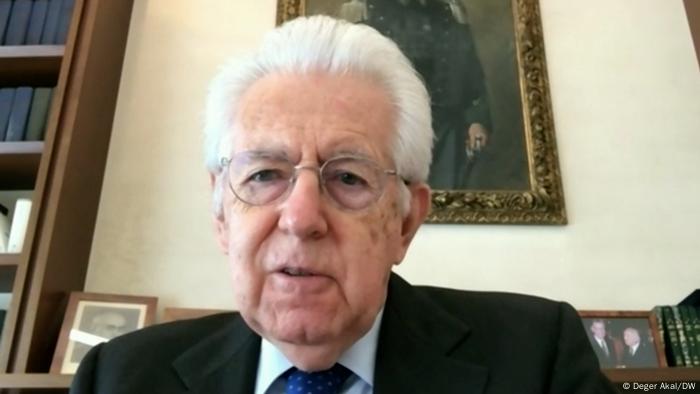It’s possible that I shall make an ass of myself. But in that case one can always get out of it with a little dialectic. I have, of course, so worded my proposition as to be right either way (K.Marx, Letter to F.Engels on the Indian Mutiny)
Saturday, September 11, 2021
A WHO Europe report advised countries to form a G20 global health board that would coordinate future responses to pandemics and fight inequality. These measures aim to protect global economies too.
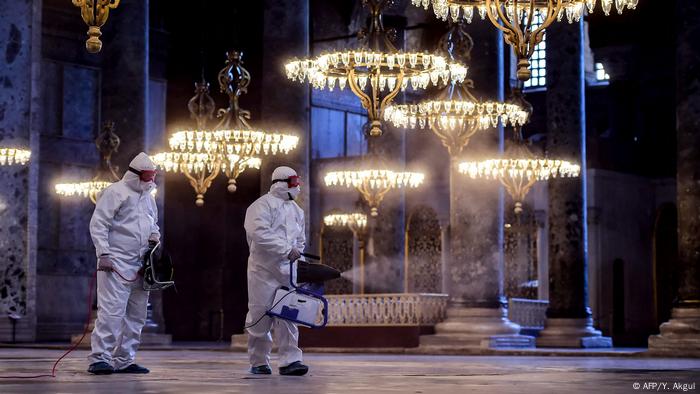
The WHO Europe department spans 53 countries, including Turkey and Russia
A commission set up by the World Health Organization (WHO) called on European countries Friday to "reinvigorate and extend our national health services."
Mario Monti, a former Italian prime minister, led a commission that found how "governance structures failed to protect our societies" and some governments were "informed by politics rather than science."
What was investigated?
The WHO Regional Office for Europe looked at how the different health authorities across its 53 member countries reacted to the pandemic, with 1.2 million deaths reported in its region so far.
It said that countries acting in different ways at different times to fight the coronavirus had led to increased spread and helped to create "an unprecedented economic downturn that dwarfs the 2008 global financial crisis."
"We can't allow another pandemic to bring the world to its knees and must do everything in our power to prevent a catastrophe on the same scale from happening again," WHO Regional Director for Europe Hans Kluge said.
"A significant obstacle has been reluctance on the part of governments to share decision-making powers or to agree shared governance arrangements for the benefit of all," Kluge said. "It's time to learn some important lessons so we don't make the same mistakes again."
The report found that many countries' first reaction was to close borders, put into action isolated responses and ignore the needs of their neighbors.
"COVID-19 showed us that single-country solutions are not enough when it comes to the spread of communicable diseases in a hyper-connected, globalized world," the WHO statement said. "Such crises can only be tackled effectively through joint international action."
What solutions did the WHO propose?
The commission report called for a new Global Health Board under the G20 which would be able to develop a more coordinated response to pandemics of the future.
Monti said "far-reaching reforms, investment programs and improvements in governance" were needed across Europe.
"In addition to increasing prevention, preparedness and response to pandemics, our recommendations design a new strategy for health and sustainable development," he concluded.
The last chance to stop global warming — or a delusion of grandeur? Scientists are working on innovative ways to artificially cool the planet. Here are three ideas at a glance.
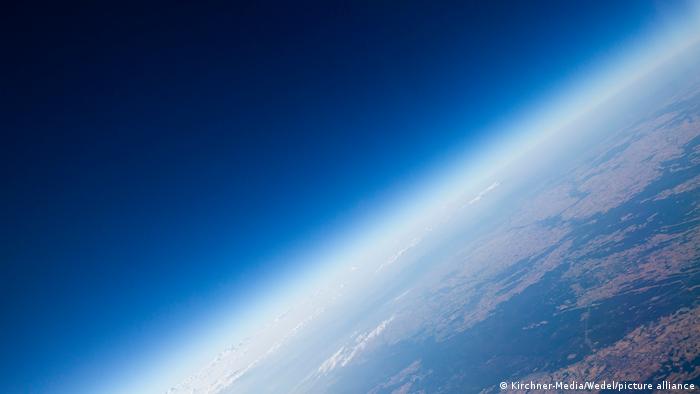
As the planet continues to get warmer, could geoengineering be our best shot at a solution?
"There is no doubt that humans are able to artificially cool the planet," explains David Keith from Harvard University. Keith is a researcher in solar engineering — a very controversial field. Mostly because it's all about discovering if and how humans can manipulate solar radiation on Earth in order to slow down climate change. Here are three different forms this idea could take — which may or may not work.
1. Mimic the power of volcanoes
When the Pinatubo volcano in the Philippines erupted on June 15, 1991, tons of ash and gas shot into the atmosphere and traveled for miles. It was the second-largest volcanic eruption of the century. To the surprise of many scientists, the event cooled the Earth by around half a degree Celsius in the months that followed. Tiny particles in the air called aerosols reflected more sunlight back into space compared to normal conditions. The result: reduced global warming.
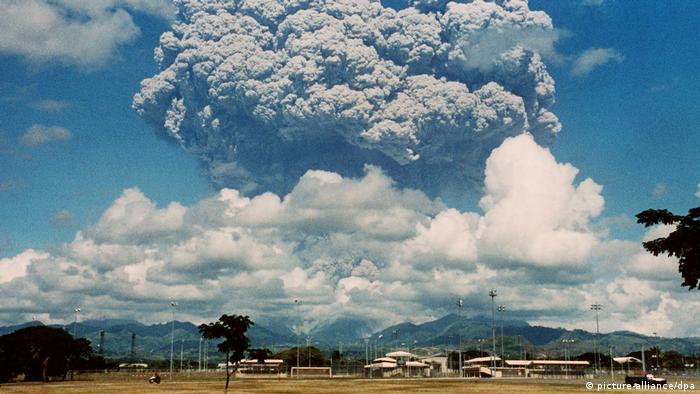
The cloud of smoke from the 1994 Pinatubo eruption had a cooling effect
Scientists like Keith want to artificially mimic this volcano effect. The theory behind it is known as stratospheric aerosol injection (SAI). It involves introducing sulfur aerosols into the stratosphere between 15 and 50 kilometers (9 and 31 miles) above the Earth's surface. The aerosols would then, theoretically, combine with water particles and reflect more sunlight than usual for the next one to three years.
"There's evidence from basically every single climate model that shows that if you do a pretty even north-to-south east-to-west distribution of aerosols in the stratosphere you can reduce many of the most important climate hazards," says Keith. "So, changes in water availability, changes in temperatures, including extreme temperatures."
In order to make it permanently cooler, the aerosols would need to be put into the stratosphere over decades and over a large area. Achieving this would require balloons, artillery, airplanes or even huge towers.
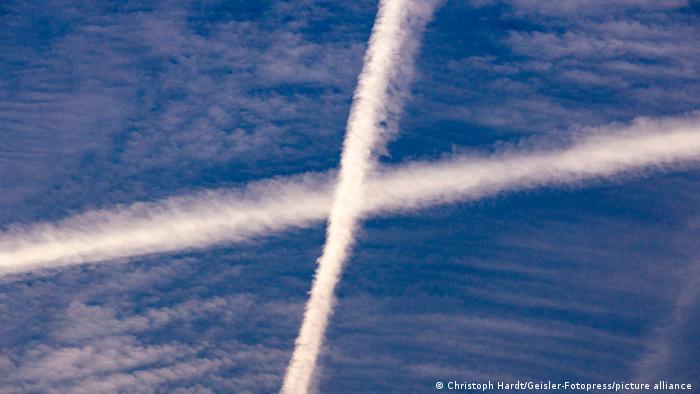
To reduce solar radiation, some scientists want to release small particles into the Earth's atmosphere
But this seemingly simple solution also poses some considerable risks. Some scientists fear it could lead to an increase in extreme weather conditions, trigger acid rain or damage the ozone layer. Critics even view the technology as a potential climate weapon.
So far it's barely been tested. The research project SCoPEx, in which Keith is also involved, planned to carry out experiments with a balloon over Sweden this year and investigate the method's effects and risks. But following protests by local communities and environmental activists, the attempt was cancelled at the last minute.
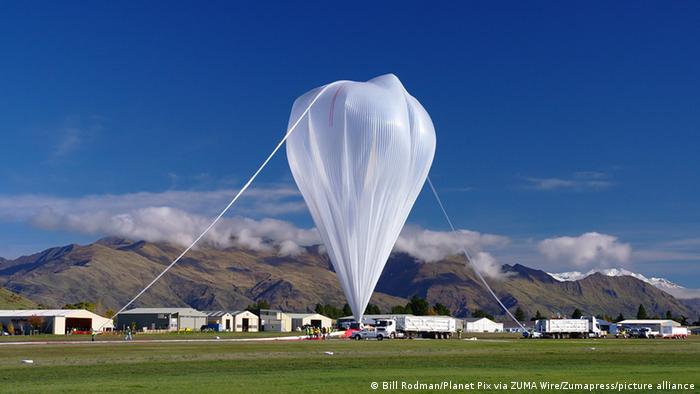
The SRI method was supposed to be tested in June with balloons before it was cancelled due to protests
2. Use the sea as a mirror
It sounds unbelievable, but some scientists are researching how to cool the planet by covering large parts of the ocean with artificial foam. This process is also known as "ocean foaming" or "microbubbles."
About 70% of the Earth's surface is covered by ocean. The water — which is mostly dark due to its depth — reflects very little sunlight and stores a lot of heat. The lighter the surface is, the less it heats up. This is called the albedo effect. And it could also be harnessed on the water.
"The idea of microbubbles in the ocean is making a foam to reflect away some portion of incoming solar radiation and to deploy it in strategic locations where you could possibly effectuate certain climate outcomes," explains Corey Gabriel, a climate scientist from the University of California San Diego.

For artificial foam to have any effect, it would need to remain on the surface of the water for several days
In theory, this foam could reflect 10 times more sunlight than dark water surfaces. With enough foam, this should be able to cool the planet by 0.5 degrees Celsius. Some scientists have suggested that the foam could be stirred up with the help of specialized ships. Or container ships around the world could deploy it in different areas of the ocean.
The method, however, remains largely unexplored and is far from being a viable solution. And the impact that huge amounts of sea foam could have on marine ecosystems is still unclear. Its potential impacts on the climate, as well as local weather events, would also be very difficult to control.
3. Paint cities white
In many cities around the world, the mercury soars during summer. New York, for example, is on average around 1 – 3 degrees Celcius warmer than its surroundings. On some evenings, it's even up to 12 C warmer.
The reason: Dark rooftops, streets and sidewalks heat up much more easily than trees, fields and areas where plants provide shade.
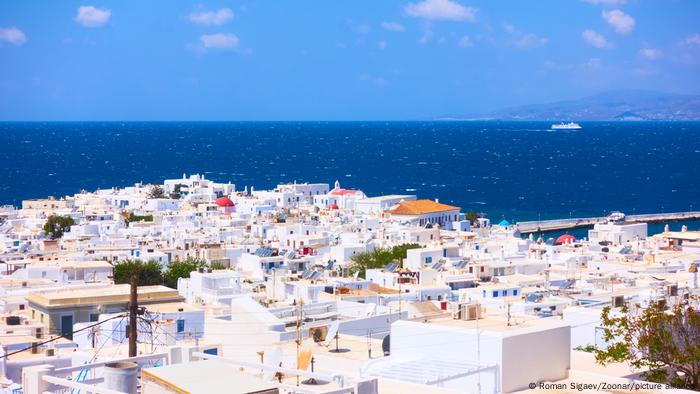
In cities like Mykonos in Greece, the buildings have always been painted white to keep the city cool
We already have a solution to this problem: Paint houses and roofs white. It's as simple as it sounds and relatively cheap, too. And it has a cooling effect. A white roof is about 30% cooler than a black one. This has long been a part of the architecture in African, Arab and southern European counties to keep the heat out.
"Local temperatures could be decreased by something in the order of one degree," explains Sonia Seneviratne, a climate scientist at ETH Zurich. "Obviously this is an average number, for very hot days when you have a lot of radiation, the effect would be even higher."
The New York City CoolRoofs initiative has applied white paint to more than one million square meters of roof space in the city since 2009. The paint not only cools the houses and the surrounding area, it also saves energy, with residents less likely to turn up their air conditioners. Scientists estimate that if all roofs and sidewalks around the world were painted white, it could save the equivalent greenhouse gas emissions of 700 medium-sized coal-fired power plants.
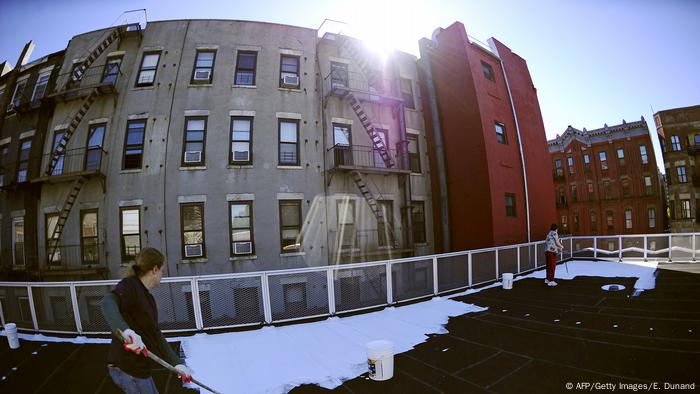
Rooftops are being painted white in New York City to help save on energy costs and emissions generated from airconditioning
Solar geoengineering — yes or no?
Although painting cities white only has an effect on the local climate, there are no dangerous side effects and the method is already being used. Due to the many uncertainties and potential risks, stratospheric aerosol injection (SAI) is meanwhile still far from becoming a reality. And creating artificial foam on the oceans is even less feasible right now.
Scientists are divided into two camps over whether more money should be investing in solar geoengineering in the future.
"If we don't do the research, then the next generation will have to make decisions in ignorance — and they may even make the decision to try implementing this even without the research," says Keith. "But I think that would be foolish I think there's somewhat of an ethical imperative to provide information to the next generation."
Even if other scientists think differently than Keith, they all agree on one point: We need to reduce greenhouse gas emissions as quickly as possible and find ways to adapt to climate change in the long term. Because even solar engineering will not be able to completely reverse global warming.
This article was adapted from German.
Tens of thousands of farmers continue to take to the streets in protest against new farm laws and vow to campaign against Prime Minister Modi's party in key state elections.
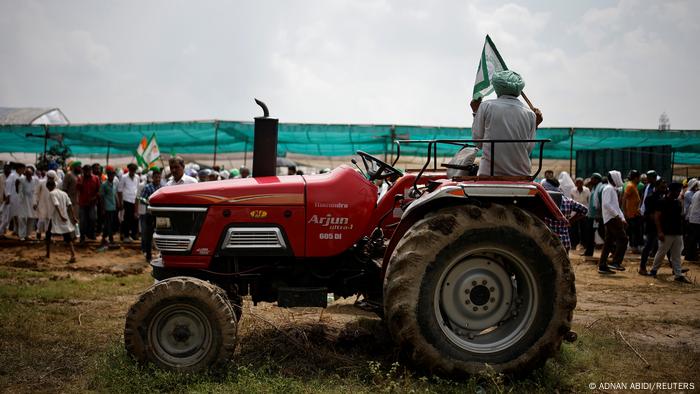
In September 2020, India's parliament passed three controversial bills aimed at liberalizing the country's farm sector
Thousands of farmers gathered at a grain market outside the Indian capital New Delhi, this week in protest against new market-friendly agriculture laws that they say threaten their livelihoods.
The protest came after another rally on Sunday involving tens of thousands of farmers vowing to remain defiant against the government over the controversial measures.
These rallies proved some of the biggest to date since farmers — largely from the northern states of Punjab, Haryana and Uttar Pradesh — trooped along the borders of the national capital to protest against agricultural bills passed by India's parliament in September last year.
"What this rally signifies is that we are ready to expand, deepen and intensify our movement," Darshan Pal, who heads the Krantikari Kisan Union, told DW.
What are the protests about?
In September 2020, India's parliament passed three controversial agriculture bills aimed at liberalizing the country's farm sector. They were subsequently signed into law by the president, sparking farmers' protests across the country.
The government argued that the new laws will give freedom to farmers to sell their produce outside regulated markets and enter into contracts with buyers at a pre-agreed price.
The ruling Bharatiya Janata Party (BJP) insists the laws will fetch better prices and free farmers from traditional middlemen who dominate the trade. The government hopes that its new policy will double farmers' income by 2022.
Farmers' associations say the legislation does not guarantee the acquisition of farm produce through state-run organizations that guarantee a minimum support price (MSP), thus leaving them at the mercy of corporations that are now expected to enter the country's troubled farming sector.
Opposition parties and even some allies of Prime Minister Narendra Modi have called the laws anti-farmer and pro-corporation and called on the government to accept the farmers' demand to roll them back.
Several rounds of negotiations between the government and farm unions have failed to resolve the stand-off.
Turning farmers 'into a formidable political class'
For more than eight months, tens of thousands of farmers have camped on major highways to New Delhi demanding the government repeal the laws.
Observers like Indra Shekhar Singh, an independent agriculture policy analyst, say the ongoing farmers' protests could transform into a vibrant political force, providing space for new politics to emerge that's rooted in agriculture and the environment.
"It clearly indicates the political clout of the farmers' movement and its role as the opposition in the country. Even if they don't enter electoral politics directly, they have created a new pressure group and laid the foundations for green politics," Singh told DW.
"The strong attendance at events and their growing numbers have molded the farmers into a formidable political class. This has laid a strong foundation for a long agitation," he added.
The protests have posed one of the major challenges to Prime Minister Narendra Modi's government so far. Experts point out that the farmer community is a powerful constituency that the government cannot afford to alienate.
About two-thirds of India's 1.3 billion population draw their livelihood from farming and the sector has long been a political minefield.
The massive protests come ahead of crucial polls next year in India's most populous state Uttar Pradesh, home to 200 million people and governed by Modi's BJP.
"Obviously, the government is shaken by these events. These protests have sent out a strong message that our resolve is further strengthened, and we cannot be ignored," Ketki Singh, vice president of the Bhartiya Kisan Union's women's wing, told DW.

1 of 10
NEW YORK (AP) — The dust cloud caught Carl Sadler near the East River, turning his clothes and hair white as he looked for a way out of Manhattan after escaping from his office at the World Trade Center.
Gray powder billowed through the open windows and terrace door of Mariama James’ downtown apartment, settling, inches thick in places, into her rugs and children’s bedroom furniture.
Barbara Burnette, a police detective, spat the soot from her mouth and throat for weeks as she worked on the burning rubble pile without a protective mask.
Today, all three are among more than 111,000 people enrolled in the World Trade Center Health Program, which gives free medical care to people with health problems potentially linked to the dust.
Two decades after the twin towers’ collapse, people are still coming forward to report illnesses that might be related to the attacks.
To date, the U.S. has spent $11.7 billion on care and compensation for those exposed to the dust -- about $4.6 billion more than it gave to the families of people killed or injured on Sept. 11, 2001. More than 40,000 people have gotten payments from a government fund for people with illnesses potentially linked to the attacks.
Scientists still can’t say for certain how many people developed health problems as a result of exposure to the tons of pulverized concrete, glass, asbestos, gypsum and God knows what else that fell on Lower Manhattan when the towers fell.
Many people enrolled in the health program have conditions common in the general public, like skin cancer, acid reflux or sleep apnea. In most situations, there is no test that can tell whether someone’s illness is related to the Trade Center dust, or a result of other factors, like smoking, genetics or obesity.
Over the years, that has led to some friction between patients who are absolutely sure they have an illness connected to 9/11, and doctors who have doubts.
___
“Most people thought I was crazy back then,” Mariama James says.
She initially had a hard time persuading doctors that the chronic ear infections, sinus issues and asthma afflicting her children, or her own shortness of breath, had anything to do with the copious amounts of dust she had to clean out of her apartment.
Years of research have produced partial answers about 9/11 health problems like hers. The largest number of people enrolled in the federal health program suffer from chronic inflammation of their sinus or nasal cavities or from reflux disease, a condition that can cause symptoms including heartburn, sore throat and a chronic cough.
The reasons for this are not well understood. Doctors say it could be related to their bodies getting stuck in cycles of chronic inflammation initially triggered by irritation from the dust.

Post-traumatic stress disorder has emerged as one of the most common, persistent health conditions, afflicting about 12,500 people enrolled in the health program. Nearly 19,000 enrollees have a mental health problem believed to be linked to the attacks. More than 4,000 patients have some type of chronic obstructive pulmonary disease, a family of potentially debilitating breathing problems.
Time has helped heal some physical ailments, but not others. Many first responders who developed a chronic cough later had it fade, or disappear entirely, but others have shown little improvement.
About 9% of firefighters exposed to the dust still report a persistent cough, according to Fire Department research. About 22% report experiencing shortness of breath. About 40% still have chronic sinus problems or acid reflux.
Tests on Fire Department personnel who spent time at ground zero found that their lung function declined 10 to 12 times greater than the rate normally expected due to aging in the first year after 9/11.
On the encouraging side, doctors say their worst fears about a possible wave of deadly 9/11 cancers haven’t come true.
Not yet, at least.

___
Nearly 24,000 people exposed to trade center dust have gotten cancer over the past two decades. But for the most part, it has been at rates in line with what researchers expect to see in the general public. The largest number have skin cancer, which is commonly caused by sunlight.
Rates of a few specific types of cancer — including malignant melanoma, thyroid cancer and prostate cancer — have been found to be modestly elevated, but researchers say that could be due to more cases being caught in medical monitoring programs.
“We really don’t have the tremendous elevations in cancer I was afraid of,” says Dr. Michael Crane, director of the World Trade Center health clinic at Mount Sinai. “I was terrified that we were going to have epidemic lung cancer.”
One study showed that cancer mortality rates have actually been lower among city firefighters and paramedics exposed to Trade Center dust than for most Americans, possibly because frequent medical screenings caught cancers early.
Beneficiaries of that screening include people like Burnette, who initially started getting treatment at the Mount Sinai clinic for a lung disease — hypersensitivity pneumonitis with fibrosis — that she developed after spending three weeks in the swirling dust at ground zero.
During one of those visits in 2017, a scan wound up detecting lung cancer.
“Had I not been in the program, or not seen Dr. Crane, I don’t know that they would have found it,” Burnette says. Since then she has had two rounds of chemotherapy. It hasn’t cured her, but it has kept the cancer at bay.
In the federal health program’s early years, many people enrolling were police officers, firefighters and other people who worked on the debris pile. More recently, though, a majority of applications have been from people who worked or lived in Lower Manhattan -- folks like Carl Sadler, who was in Morgan Stanley’s 76th floor office in the Trade Center’s south tower when it was struck and rocked by a hijacked aircraft.
“There were millions of pieces of paper flying out. Credenzas. Computers,” Salder says. “We saw chairs flying by that looked like they had people in them.”
He worked his way down stairwells and escalators to the street, then moved away with the crowd. “As we got to Water Street, just a block away from the Fulton Fish Market, there was a huge explosion and the clouds and everything just turned black ash and gray and we were covered with soot,” he says.
Initially, Sadler’s health seemed fine. But a few years after the attacks, he started to get winded while exercising and suffering from recurring bronchitis. In his 60s, he had to give up some outdoor pursuits like skiing and soccer.
“I just had breathing problems,” he says, “but I never knew what they were.”
Now 80, he has been diagnosed over the years with acid reflux disease, asthma, and also thyroid cancer and skin melanoma, for which he was successfully treated. He figured it was all just part of getting older until around 2017, when a friend suggested he register with the World Trade Center health program.
“He said, ’You have a lot of health issues. You’ve had a lot of health issues. You should register,” Sadler says.
Last year another 6,800 people joined the health program. Not all its members are currently sick. Many have signed up in case they get cancer in the future. Some have had their conditions clear up. Last year, about 1,000 people in the program got in-patient treatment and around 30,400 got outpatient treatment, according to program statistics.
The victim compensation fund, which makes payments to people with illnesses linked to the attacks, has an unlimited budget from Congress, but the medical program has grown so much it might run out of money. Members of Congress have introduced a bill that would provide an additional $2.6 billion over 10 years to cover an expected funding gap starting in 2025.
Under the program, anyone who worked or lived in Lower Manhattan or a small slice of Brooklyn is eligible for free care if they develop certain illnesses. The list includes about a dozen types of airway or digestive disorders, 10 different psychological disorders and at least two dozen types of cancer.
Research is also underway to possibly add to the list of covered conditions. The program’s administrator, Dr. John Howard, says conditions being studied now include autoimmune diseases, like rheumatoid arthritis.
One early estimate was that as many as 490,000 people could wind up being covered, in part because people don’t have to prove their sickness is related to the Sept. 11 attacks to qualify. If a person has a condition on the list, they are presumed to be eligible.
“We cover lung cancer, regardless of attribution issues,” Howard says. “If you have lung cancer, we don’t go through an analysis of how many pack years of smoking you engaged in.”
___
Viewed through the lens of public health, what might the next 20 years after 9/11 hold for people who were there on that morning, and on the days and weeks that followed?
The average age of enrollees in the federal health program is now around 60, and Dr. Jacqueline Moline, director of the World Trade Center health clinic at the Northwell Health medical system, is concerned that people’s health problems will worsen as they age. Cancer caused by asbestos, she noted, can take as long as 40 years to develop after exposure.
“We are just getting to the point where we might start seeing stuff,” Moline says. She’s also deeply concerned about the long-term effect of post-traumatic stress.
In addition to the psychological harm, there are fears that the constant jolts of adrenaline and other stress hormones that come with PTSD could worsen heart problems or weaken the immune system. And with that, the emotional and physiological ripples of one day in September 20 years ago could collide in new and debilitating ways.
Crane, who has been treating ground zero responders since the beginning, says one thing is clear based on the continuing stream of new patients: The issue isn’t going away.
“They keep on coming,” he says. “They keep on coming in the door.”
___
David Caruso, New York City news editor for The Associated Press, has covered the aftermath of 9/11 for more than a decade. Follow him on Twitter at http://twitter.com/dcarusoAP
By MEG KINNARD and EMILY SWANSON

This April 28, 2021, file photo shows the U.S. Capitol building in Washington. Ten years after the 9/11 attacks, Americans were reasonably positive about the state of their rights and liberties. Today, after 20 years, not as much. That’s according to a new poll by The Associated Press-NORC Center for Public Affairs Research that builds on work conducted in 2011, one decade after the pivotal moment in U.S. history. (AP Photo/J. Scott Applewhite, File)
Ten years after the 9/11 attacks, Americans were reasonably positive about the state of their rights and liberties. Today, after 20 years, not as much.
That’s according to a poll by The Associated Press-NORC Center for Public Affairs Research that builds on work conducted in 2011, one decade after the pivotal moment in U.S. history. Some questions were also asked on polls conducted in 2013 and 2015.
Americans were relatively united around the idea that the government did a good job protecting many basic rights a decade after the terrorist attacks, which produced a massive overhaul of the country’s intelligence services and the creation of agencies such as the Department of Homeland Security. Along with those changes came a creeping concern about government overreach, although Americans as a whole remained fairly positive.
That attitude has eroded in the years since, with far fewer people now saying the government is doing a good job protecting rights including the freedom of speech, the right to vote, the right to bear arms and others.
For example, the poll finds that 45% of Americans now say they think the U.S. government is doing a good job defending freedom of speech, compared with 32% who say it’s doing a poor job and 23% who say neither. The share saying the government is doing a good job is down from 71% in 2011 and from 59% in 2015.
Dee Geddes, 73, a retiree in Chamberlain, South Dakota, said she was frustrated at the government’s apparent lack of ability to safeguard the amount of private information available, especially online.
“It bothers me when I can go on the internet and find pretty much anything about anybody. It makes me feel sort of naked,” said Geddes, who identifies as a Republican. “It does bother me how much the government knows about us, but that goes back to the fact that there’s so much out there period. It’s discouraging.”
About half now say the government is doing a good job protecting freedom of religion, compared with three-quarters who said the same in 2011.
More Americans now think the government is doing a poor job than a good one at protecting the right to equal protection under the law, 49% to 27%. In 2011, opinions were reversed, with more people saying the government was doing a good job than a poor one, 48% to 37%.
The poll also finds that 54% of Americans say it’s “sometimes necessary for the government to sacrifice some rights and freedoms to fight terrorism,” compared with 64% a decade ago. Now, 44% say that’s never necessary at all.
A majority of Democrats say it’s sometimes necessary, which is largely consistent with previous AP-NORC polls. But Republicans are now closely divided, with 46% saying it’s sometimes necessary and 53% saying it’s never necessary. In 2011, 69% of Republicans said it was sometimes necessary, and 62% said the same in 2015.
Brandon Wilson, 23, a business and animation student at College of DePage in Glen Ellyn, Illinois who described himself as a conservative, said he understood that steps taken after Sept. 11 may have initially seemed to constrain Americans’ rights, but that he ultimately felt the actions had been for the greater good.
“I think it’s a good idea,” Wilson said of measures such as increased airline passenger screening. “The government is helping the general public and, overall, trying to make people’s lives better.”
On the whole, though, Americans have grown more wary of government surveillance in the name of national security, the poll shows.
The poll asked about a variety of rights and liberties, including many of those outlined explicitly in the Constitution’s Bill of Rights, as well as several protected by laws and court rulings.
It finds 44% now say the government is doing a good job protecting the freedom of the press, compared with 26% who think the government is doing a poor job. In both 2011 and 2015, about 6 in 10 said the government was doing a good job.
Americans are about equally divided on how the government is doing at protecting the freedom from unreasonable search and seizure. About one-third say it’s doing a good job and about one-third say it’s doing a poor job. In 2011 and 2015, views were slightly more positive than negative, though less than half of Americans said the country was doing a good job.
Tony Gay, 60, a retiree who lives in Cincinnati, said that he generally supported the government’s moves to protect civil liberties. He said his 10 years of Army service helped reinforce his opinion that sacrifice is sometimes necessary to safeguard freedoms.
“You can’t have your freedom 24/7 if there’s no one there to protect it,” Gay said. “So when they put restrictions on travel, I’m all for that, because it’s to make sure that I’m safe, and make sure that the person next to me is safe.”
Forty-three percent of Americans think the U.S. government is doing a good job protecting the right to vote, while 37% say it’s doing a poor job. By comparison, 70% said it was doing a good job in 2015 and 84% said the same in 2011.
Americans also are now divided on whether the government is doing a good or poor job protecting the right to bear arms, 35% to 36%, but in 2011, more said it was doing a good job than a poor one, 57% to 27%.
Democrats are more likely than Republicans to say the government is doing a good job of protecting several rights and freedoms, including the freedom of religion, the freedom of speech, the freedom of the press and the right to keep and bear arms.
But Democrats are somewhat more likely than Republicans to say the government is doing a poor job enforcing equal protection under the law, 54% to 46%. Views among Democrats and Republicans are largely similar on how well the government is protecting the right to vote, and the views among both have become notably less positive than in the earlier polls.
Even if he’s relatively comfortable with the government’s protection of basic civil liberties, Gay said he feels periodic review of the policies, and those making them, should be necessary.
“It’s like when you’re in politics, you have free rein,” Gay said. “It gives me mixed feelings about who is watching over us.”
___
Meg Kinnard can be reached at http://twitter.com/MegKinnardAP.
____
The AP-NORC poll of 1,729 adults was conducted Aug. 12-16 using a sample drawn from NORC’s probability-based AmeriSpeak Panel, which is designed to be representative of the U.S. population. The margin of sampling error for all respondents is plus or minus 3.2 percentage points.
Issued on: 11/09/2021 -

Rabat (AFP)
Morocco's King Mohammed VI on Friday named businessman Aziz Akhannouch to lead a new government after his National Rally of Independents (RNI) thrashed the long-ruling Islamists in parliamentary elections.
The king appointed Akhannouch "head of the government and tasked him with forming a new government", following Wednesday's polls, a statement from the palace said.
The RNI won 102 of parliament's 395 seats, trouncing the moderate Islamist Justice and Development Party (PJD), which had headed the governing coalition for a decade but took just 13 seats, according to results released by the interior ministry.
Akhannouch hailed the results as "a victory for democracy".
The billionaire businessman -- worth $2 billion according to Forbes -- has led the RNI since 2016.
His party is considered close to the palace and has been part of all coalition governments for the past 23 years, except during a brief period between 2012 and 2013.
Following his win, Akhannouch pledged to improve conditions for citizens of Morocco, where entrenched social inequalities have been exacerbated by the pandemic.
"The main commitment of the party is to work seriously as long as we enjoy the confidence of citizens, to improve their daily lives, to achieve their aspirations and regain confidence in their representatives," he said.

The economy shrank by 7.1 percent in 2020 and the poverty rate shot up to 11.7 percent during the lockdown, the Moroccan statistics institute said in April.
A recent overhaul of the elections laws meant it was the first time Morocco's 18 million voters cast ballots in both parliamentary and local elections on the same day, an effort to boost turnout.
Around 50.35 percent of eligible voters participated, according to the interior minister, higher than the 43 percent in the 2016 legislative polls.
Akhannouch's party also came first in the local elections, winning 9,995 of the 31,503 seats, and the regional poll with 196 of the 678 positions.
- Negotiations -
Akhannouch said he was ready to begin negotiations to form his coalition government.
"The most important thing is to have a coherent and united majority," he said in a televised address Friday evening.
Under Morocco's constitutional monarchy, the new administration must be submitted for approval by the king, who reserves veto rights.

Akhannouch will likely draw from the main opposition, the Authenticity and Modernity Party (PAM) -- founded by an influential royal advisor -- which came second in the parliamentary elections with 86 seats, as well as the conservative Istiqlal party, which took 81 seats.
Cabinet horsetrading is not expected to include the PJD however, which announced that it would switch to its "natural" position as the opposition.
Swept to power in the wake of the 2011 uprisings around the Middle East and North Africa, the PJD had hoped to secure a third term leading a ruling coalition.
Despite the change of guard, policy shifts are unlikely since major decisions in Morocco still come from King Mohammed VI.
The head of the Arab world's longest-serving dynasty has already announced a charter for a "new model of development" with a "new generation of reforms and projects" in the coming years, with political parties expected to sign up.
The plan's major aims include reducing Morocco's wealth gap and doubling per-capita economic output by 2035.
© 2021 AFP
Issued on: 11/09/2021 -

Barcelona (AFP)
Catalan separatists are expected to jam the streets of Barcelona on Saturday in a test of their strength ahead of fresh negotiations with Spain's government.
The protest coincides with Catalonia's national day, or "Diada", which commemorates the 1714 fall of Barcelona in the War of the Spanish Succession and the region's subsequent loss of institutions.
The Siege of Barcelona (Catalan: Setge de Barcelona, IPA: [ˈsedʒə ðə βəɾsəˈlonə]) was a battle at the end of the War of Spanish Succession, which pitted Archduke Charles of Austria (backed by Great Britain and the Netherlands, i.e. the Grand Alliance) against Philip V of Spain, backed by France in a contest for the Spanish crown.
PreludeDuring the early part of the war, Barcelona, the capital and largest city of Catalonia, had fallen to the forces of Archduke Charles: his fleet had anchored in the port on 22 August 1705, landing troops which surrounded the city. These troops later captured the fort of Montjuïc, and used it to bombard the city into submission on 9 October. The Principality of Catalonia, as well as the other realms of the Crown of Aragon (Aragon, Valencia, and Mallorca), quickly accepted Charles III as their new king. Charles summoned the last Catalan Courts of history.
AT THIS POINT IN HISTORY THE NETHERLANDS HAD THE LARGEST NAVY IN EUROPE
As in other years, the march will get underway at 17:14 (1514 GMT) -- a nod to the year 1714. The slogan this year is: "We will fight for independence and win".
At its peak in 2014, the annual demonstration brought an estimated 1.8 million people onto the streets.
While Catalonia was the epicentre in July of a fresh wave of Covid-19 infections, the situation has since improved and a ban on gatherings of more than 10 people was recently lifted.
Jordi Cuixart, the leader of grassroots separatist movement Omnium Cultural, said he hoped to "bring hundreds of thousands of people onto the streets" this year to "prove once again that our movement is more alive than ever".
But much has changed since the frenetic autumn of 2017 when Catalonia's bid to break away from Spain triggered the country's worst political crisis in decades.
Leaders of the wealthy northeastern region, which has a population of 7.8 million, defied a government ban to organise a secession referendum and then issued a short-lived declaration of independence.
Those behind the move were arrested, tried and sentenced to long jail terms by Spain's top court, while others fled abroad to avoid prosecution, leaving the movement sharply at odds over how to move forward.
The Spanish government's pardon in June of nine Catalan separatist leaders, including Cuixart, has also removed a rallying cry for the pro-independence camp.
Only 600,000 people turned out for the Diada in 2019. Last year, coronavirus-related health restrictions reduced the celebrations to separate events which drew fewer than 60,000 people.
This year's protest comes as top-level talks on resolving the Catalan crisis are set to resume next week between Prime Minister Pedro Sanchez's minority government and the separatist regional government of Catalonia.
The separatists have two key demands -- an amnesty for those involved in the failed independence bid, which would exonerate those who fled abroad, and a referendum on self-determination, this time with Spain's approval.
But Madrid is implacably opposed to both.
Tensions rose sharply this week after Spain's central government suspended plans to expand Barcelona airport, citing a "lack of confidence" in Catalonia's regional leadership.
Catalonia's regional leader Pere Aragones denounced the suspension as "blackmail".
Issued on: 11/09/2021 -

Washington (AFP)
A video analysis shows the United States may have mistakenly targeted an aid worker rather than Islamic State fighters in its final strike in Afghanistan which killed 10 civilians, The New York Times said Friday.
The Pentagon has said it disrupted a new attack planned by the Islamic State extremist group through a Reaper drone strike on August 29 -- the day before US troops ended their 20-year mission and following a devastating attack outside the airport where vast crowds rushed to leave the victorious Taliban.
But Kabul resident Aimal Ahmadi earlier told AFP that the strike killed 10 civilians including his small daughter, nephews, nieces and his brother Ezmarai Ahmadi, who was driving the car that was struck after he parked.
The New York Times, analyzing security camera footage, said the US military may have been seeing the slain Ahmadi and a colleague loading canisters of water, which was in short supply after the collapse of the Western-backed government, and picking up a laptop for his boss.
Ezmarai Ahmadi was an electrical engineer for the California-based aid and lobbying group Nutrition and Education International and himself was among thousands of Afghans who had applied for resettlement in the United States, relatives said.
US officials say that a larger blast took place after the drone strike, showing that there were explosives in the vehicle.
But the New York Times investigation said there was no evidence of a second explosion, with only one dent on a nearby gate and no clear signs of an additional blast such as blown-out walls.
Aimal Ahmadi earlier told AFP that 10 civilians were killed. US officials have acknowledged three civilian deaths but argued that the hit prevented another deadly attack.
Commenting on the report, Pentagon spokesman John Kirby said that US Central Command "continues to assess" the strike but that "no other military works harder than we do to prevent civilian casualties."
"As Chairman (Mark) Milley said, the strike was based on good intelligence, and we still believe that it prevented an imminent threat to the airport and to our men and women that were still serving at the airport," Kirby said, referring to the top US general.
The New York Times noted that a rocket attack the following morning, claimed by the Islamic State group, was carried out from a Toyota Corolla similar to Ahmadi's.
More than 71,000 Afghan and Pakistani civilians have died directly from the war launched by the United States after the September 11, 2001 attacks, with casualties rising dramatically after then president Donald Trump relaxed rules of engagement in 2017, according to a Brown University study in April.



